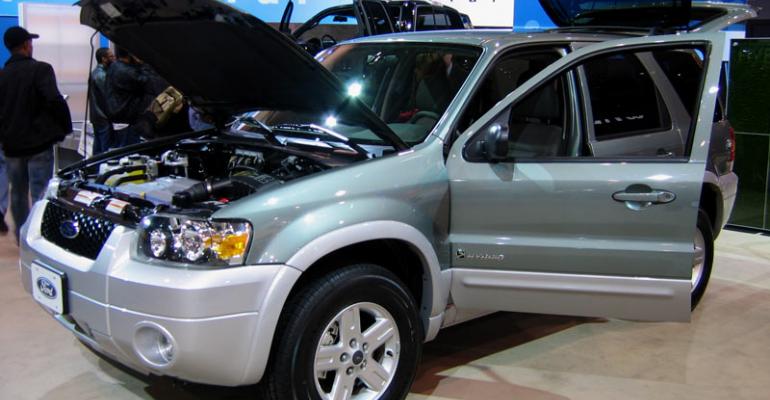Ford says the regenerative-brake system used on its hybrid and plug-in hybrid-electric vehicles has recaptured enough kinetic energy to save owners an estimated 100 million gallons (378 million L) of gasoline over the past 15 years, enough to drive around the world nearly 100,000 times.
The first full-series regenerative brake system was introduced on the ’04 Escape cross/utility HEV, but earlier versions of the technology were offered on a few other vehicles prior to the Escape, including the Ford Ranger and Ecostar electric vehicles in the 1990s.
Dale Crombez, a Ford technical expert on regenerative braking systems, says the technology has evolved greatly since the first iteration.
Early versions of the technology were a parallel-regenerative-braking system – a standard regenerative-braking system adding only a few components to a conventional brake technology. The system was simple, but didn’t maximize efficiency.
“The most efficient way to do regenerative braking is to hold off on friction brakes and do regenerative braking first, and only when it exceeds its capability do you bring in friction brakes,” he says. “That requires brake-by-wire systems, and the first one was on the ’04 Escape.”
Today’s system uses electric motors to slow the vehicle and funnel the expelled energy into the battery pack. Ford says the latest technology can help improve fuel economy up to 30%.
“We’re recapturing up to 95% of kinetic energy that would otherwise go to waste,” Crombez says, “and that’s compared with 30% to 50% for some other auto makers.”
During development, Ford benchmarked the regenerative-brake systems of its top competitors and honed the system to be best-in-class.
Ford says its system goes further than the competition by utilizing more powerful motors, an advanced lithium-ion battery able to store energy faster than a nickel-metal-hydride unit and proprietary software developed in-house.
The key to recapturing as much energy as possible is a slow, steady braking motion, as opposed to quick, abrupt stops that can overwhelm the regenerative-braking system. Crombez says regenerative brakes can handle a 0.2g load before the friction brakes activate.
Unlike conventional friction brakes, regenerative brakes require no maintenance, which makes them a popular choice among fleet owners.
Now in its third generation, Crombez and his team continue to work with supplier partners to improve the system, as well as drive down costs and reduce size and weight.
“We keep seeing significant gains, especially when compared to mature technologies where you try and only get a few percentage points in improvements year-over-year,” Crombez says. “New technologies tend to drop (in cost) significantly generation to generation, and that’s still true.”





